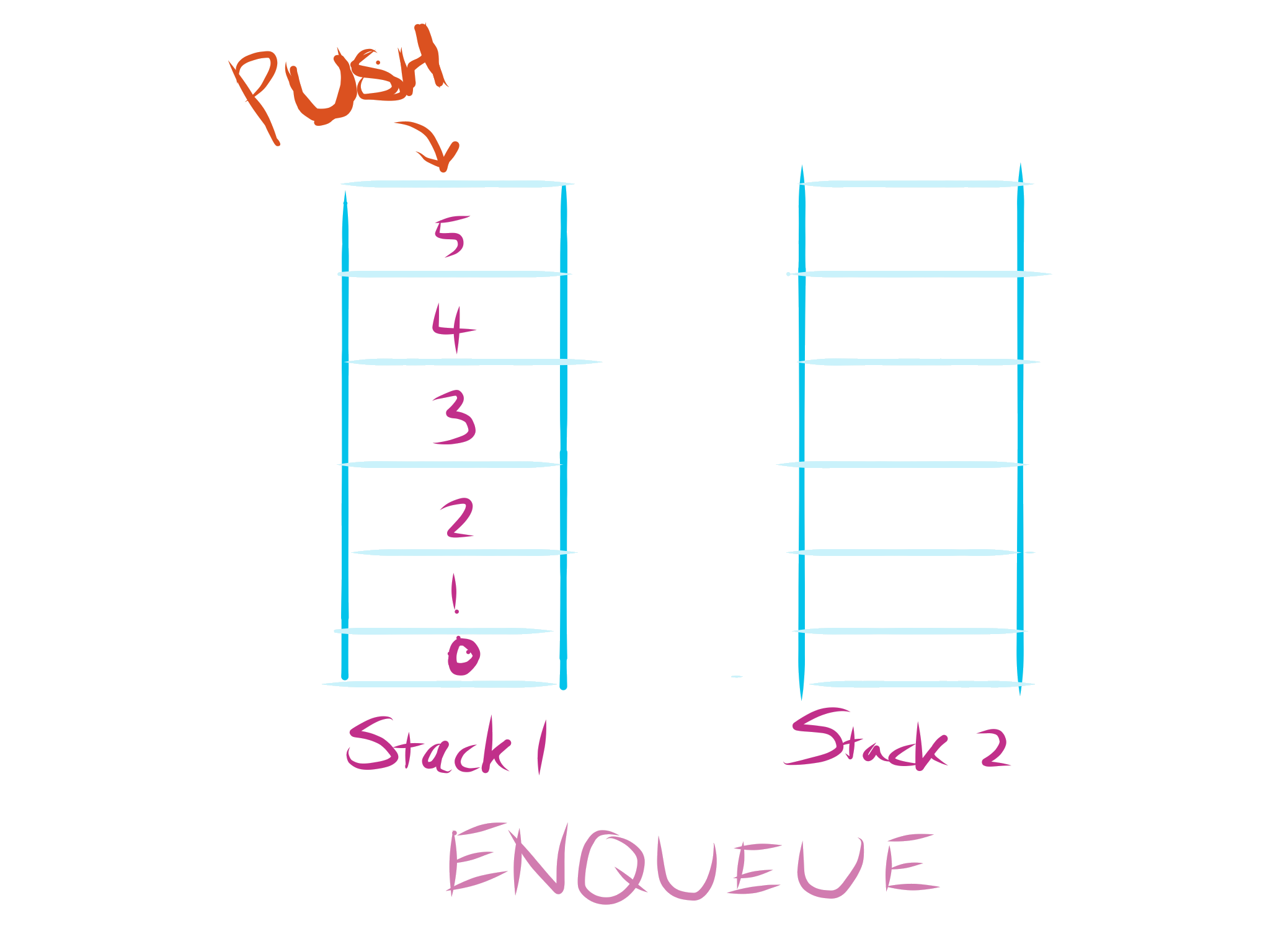Community
Start a ThreadNotifications
Subscribe You’re not receiving notifications from this thread.Two Stack Queue (Main Thread)
Here is the interview question prompt, presented for reference.
Building a Queue with Two Stacks: A Challenge in Engineering Elegance
The Objective: Queue with Stacks
In this challenge, your task is to implement a queue using two stacks. While many programming languages offer queues through arrays or lists, we're restricting our approach to only utilize stacks.
The end result should behave like this:
const tsq = new TwoStackQueue();
tsq.push(1);
tsq.push(2);
tsq.pop(); // Should return 1
tsq.pop(); // Should return 2
The Blueprint: Visualizing the Mechanics
Imagine having two stacks that work in harmony to simulate a queue. These stacks are like two components of a complex machine, each with its own specific role.

Constraints and Expectations
Let's clarify the rules of the game:
- Number of Operations: The maximum number of operations won't exceed 100,000.
- Value Ranges: The elements you push onto the stack will range between -1,000,000,000 and 1,000,000,000.
- Time Complexity for Push: If the pop operation has a time complexity of
O(n), then the push operation should beO(1). Otherwise, the time complexity for push should beO(n). - Time Complexity for Pop: If the push operation has a time complexity of
O(n), then the pop operation should beO(1). Otherwise, it should beO(n). - Space Complexity: Expected to be
O(n).
You can see the full challenge with visuals at this link.
Challenges • Asked about 8 years ago by Team AlgoDaily
This is the main discussion thread generated for Two Stack Queue.
Test case 3 is wrong
Hi Aishwarya,
For which language?
For python
According to test 3
tsq = TwoStackQueue(); tsq.push(1); tsq.push(2); tsq.pop(); tsq.push(3); tsq.pop(); assert tsq.pop() == 1
tsq should pop 1 but it pop 3 since the operation order is push,push,pop,push,pop,pop